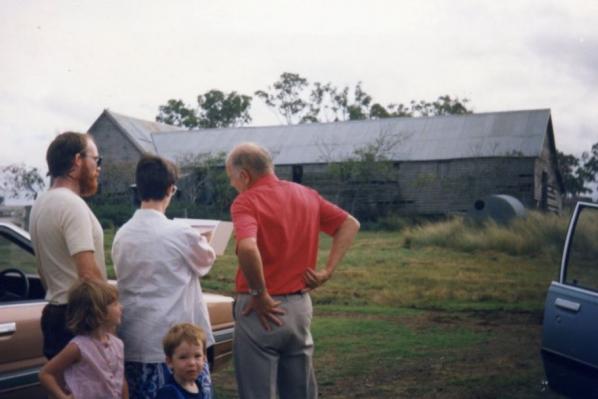
Free Times history contributor DEB WHEELER says four years ago she and her husband “had the great pleasure of hosting Megan and Alun Stevens at our Bed & Breakfast”.
“Being a keen history buff myself I was intrigued to learn about Megan’s search to find out the true story of her forefather Charles Marshall,” Deb said.
“Most people in the district know of Mt Marshall and Glengallan Homestead but how many know the background of the Marshall family and the influence they held in the area many years ago?
“Megan has kindly submitted the following article and I encourage anyone wanting to learn more to check out the link at the end of the story.”
By MEGAN STEVENS
Glengallan and Charles Henry Marshall are in my blood. I grew up knowing of them, even though I didn’t know much about them. However, when my husband, Alun, was transferred to Brisbane from Melbourne in the late 1980s I was determined to learn more. My mother also wanted to know about her great-grandfather when she and my father came to visit from South Africa. They had permission from Roy and Helen Smith to visit Glengallan. So, in 1988, armed with a print of the 1858 watercolour of Glengallan by my great-great-grandmother, Charlotte, we visited the property, trying to work out where everything was in relation to the homestead John Deuchar built. Not easy.
Fortunately for me I never found the trove of documents on Glengallan in the John Oxley Library in Brisbane when we lived there, as there was no way I would have been able to do justice to the documents without a digital camera or a laptop computer. Besides I had two small children who took up my time.
Fast forward twenty years, time spent completing an MA in History and raising my children, when I came across a book, written by a Nobel laureate, Professor Ronald Coase, called Essays on Economics and Economists (1994). Why was this book important? Alfred Marshall, nephew of Charles Henry Marshall, was a prominent economist, and this book included two essays on him and his family. What a goldmine!
Unfortunately, Coase did not present the Marshalls in a flattering light, claiming they were dishonest and self-aggrandising. Coase described a meeting on the Turon goldfields between Charles and Nehemiah Bartley, who had written about his travels around Australia in Opals and Agates (1892). Bartley wrote that he had come across Mr. Marshall, son of the Chief Cashier of the Bank of England. Coase claimed that this was deceitful of Charles Marshall, as he was not the son of the Chief Cashier, but the brother of a mere clerk at the Bank of England.
So, Alun and I decided to find out what Charles was doing on the Turon goldfields. And this was where Professor Coase’s story started to unravel. We found that Charles had never been to Turon. It was Francis Marshall who was there, and he was indeed the son of the Chief Cashier of the Bank of England. Coase had found the wrong Marshall and based many of his assumptions about the Marshall family on this incorrect information. Charles Marshall was not deceitful, nor was he big-noting himself. He wasn’t there.
Unravelling the mystery of the wrong Marshall has taken us over three years. With encouragement from academics and family members, we submitted a paper to the peer-reviewed journal, History of Political Economy, at the end of 2017, and, as is the case when dealing with journals such as these, our paper was eventually published in May 2020.
If this story has whetted your appetite to find out more about Charles Henry Marshall of Glengallan, and how we solved the mystery of the wrong Marshall, you can find out more on our website at downrabbitholes.com.au/2020/04/29/twm/.






